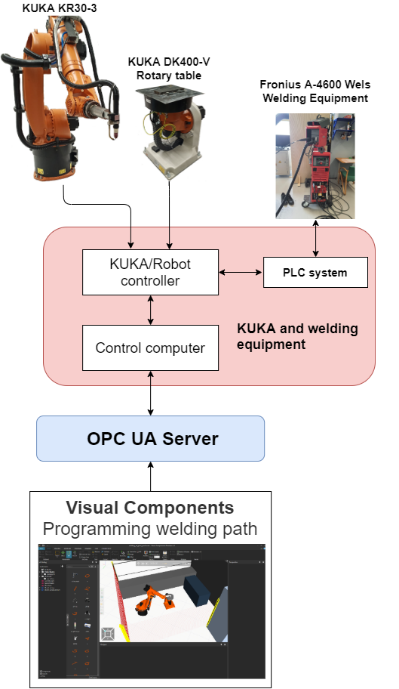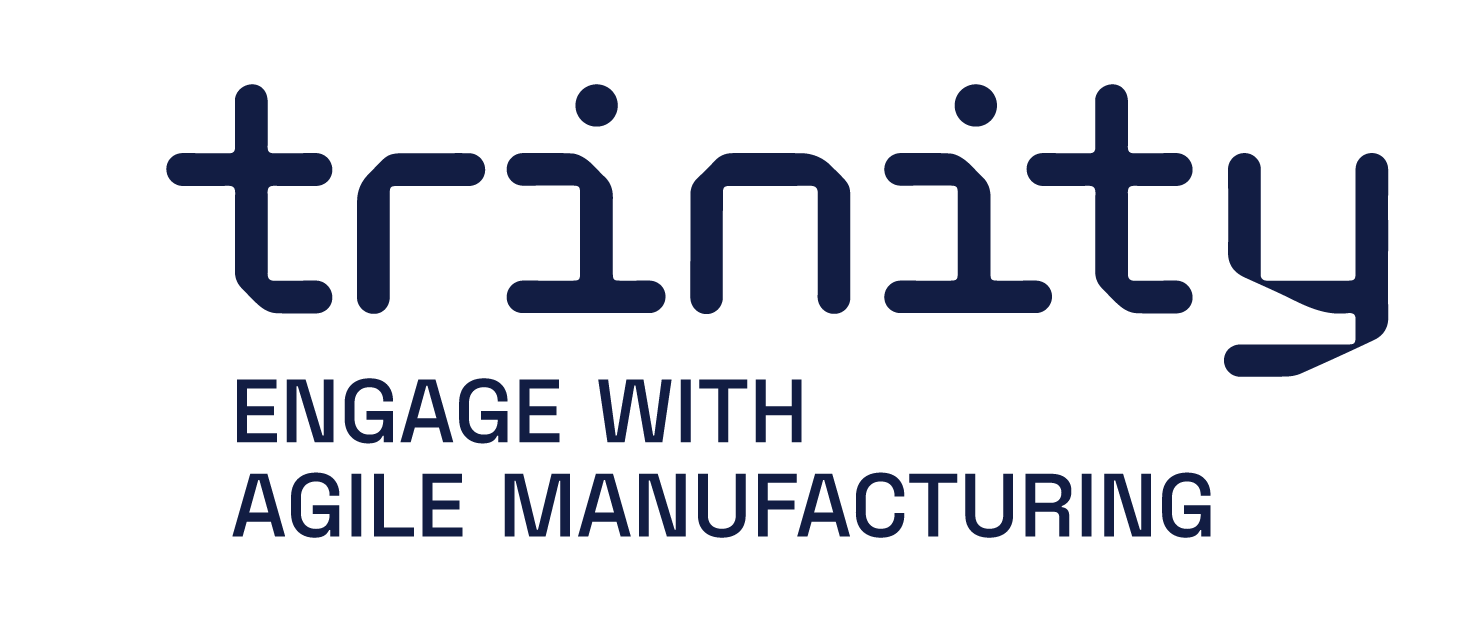Simulation welding
Main functionalities
The main functionality of the module is to use a simulation software to program a welding path by creating a connection between the simulation software (Visual Components), the industrial robot and rotary table (KUKA).
The system works by having a translator between the simulation software and the industrial robot. The translator takes the data from the simulation and uses the data to control the robot with the parameters from the simulation software.
Benefits of the module:
Creates a simple method for re-programming and configuration of the welding system
Offline testing of welding program
Verification of welding program before running it on the physical robot.
Being able to program the robot while not being in the production environment. Remote programming.
Monitoring of the system
Release humans from labor-intensive, heavy work, or hazardous work environments.
Technical specifications
The system consists of an industrial KUKA Robot and a rotary table coupled to the same KUKA controller (KR C2). A Fronius MagicWave 5000, a completely digitized TIG welder, is connected to a PLC and then to the KUKA controller as shown in Fig 1. With the KUKA controller It is possible to set welding parameters and control the welding machines. For this reason, the system is setup with an external computer connected to the KUKA controller, which can control the KUKA robot, rotary table and welding equipment in real time.

How the 3D structure is generated in Visual Components
Inputs and outputs
Inputs: The robot and rotary table are programmed in Visual Components to generate robot motion data.
Output: Data to the KUKA robot, rotary table and welding equipment.
Formats and standards
Visual Components Premium 4.2 (simulation/programming tool), OPC UA standards (Connecting robot and simulation software), translator from Visual Components to the robot and rotary table (made in Python) and KUKA controller with the Robot Sensor Interface (RSI) add-on for real time control of the robot and rotary table.
Owner (organization)
The Owner of the demonstrator is: The Artic University of Norway (UiT) https://en.uit.no/startsida
The Arctic University of Norway is a medium-sized research university that contributes to knowledge-based development at the regional, national and international level. UiT is the third largest university in Norway and northernmost university in the world. UiTs study portfolio covers all classical subject areas from Health Sciences, Social Sciences, Education and Humanities, Science and Technology to Economics, Law, Social Work, Tourism, Sports and Fine Arts. While the key research areas covers the polar environment, climate research, indigenous people, peace and conflict transformation, telemedicine, medical biology, space physics, fishery science, marine bioprospecting, linguistics and computational chemistry.
Trainings
To learn more about the solution, click on the link below to access the training on the Moodle platform
Simulation Welding
